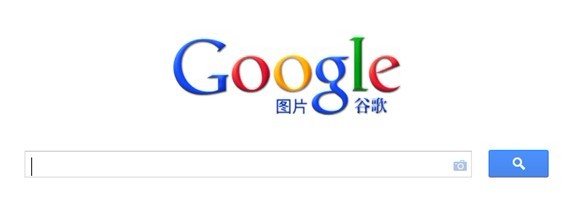图片相似原理--Java实现
Posted 云中雀
tags:
篇首语:本文由小常识网(cha138.com)小编为大家整理,主要介绍了图片相似原理--Java实现相关的知识,希望对你有一定的参考价值。
前阵子在阮一峰的博客上看到了这篇《相似图片搜索原理》博客,就有一种冲动要将这些原理实现出来了。
Google "相似图片搜索":你可以用一张图片,搜索互联网上所有与它相似的图片。
打开Google图片搜索页面:

点击 使用上传一张原图:
使用上传一张原图:

点击搜索后,Google将会找出与之相似的图片,图片相似度越高就越排在前面。如:

这种技术的原理是什么?计算机怎么知道两张图片相似呢?
根据Neal Krawetz博士的解释,实现相似图片搜素的关键技术叫做"感知哈希算法"(Perceptualhash algorithm),它的作用是对每张图片生成一个"指纹"(fingerprint)字符串,然后比较不同图片的指纹。结果越接近,就说明图片越相似。
以下是一个最简单的Java实现:
预处理:读取图片
File inputFile = newFile(filename); BufferedImage sourceImage = ImageIO.read(inputFile);//读取图片文件
第一步,缩小尺寸。
将图片缩小到8x8的尺寸,总共64个像素。这一步的作用是去除图片的细节,只保留结构、明暗等基本信息,摒弃不同尺寸、比例带来的图片差异。
int width= 8; intheight = 8; // targetW,targetH分别表示目标长和宽 int type= sourceImage.getType();// 图片类型 BufferedImagethumbImage = null; double sx= (double) width / sourceImage.getWidth(); double sy= (double) height / sourceImage.getHeight(); // 将图片宽度和高度都设置成一样,以长度短的为准 if (b) { if(sx > sy) { sx= sy; width= (int) (sx * sourceImage.getWidth()); }else { sy= sx; height= (int) (sy * sourceImage.getHeight()); } } // 自定义图片 if (type== BufferedImage.TYPE_CUSTOM) { // handmade ColorModelcm = sourceImage.getColorModel(); WritableRasterraster = cm.createCompatibleWritableRaster(width,height); booleanalphaPremultiplied = cm.isAlphaPremultiplied(); thumbImage= new BufferedImage(cm, raster, alphaPremultiplied, null); } else { // 已知图片,如jpg,png,gif thumbImage= new BufferedImage(width, height, type); } // 调用画图类画缩小尺寸后的图 Graphics2Dg = target.createGraphics(); //smoother than exlax: g.setRenderingHint(RenderingHints.KEY_RENDERING, RenderingHints.VALUE_RENDER_QUALITY); g.drawRenderedImage(sourceImage,AffineTransform.getScaleInstance(sx, sy)); g.dispose();
第二步,简化色彩。
将缩小后的图片,转为64级灰度。也就是说,所有像素点总共只有64种颜色。
int[]pixels = new int[width * height]; for (inti = 0; i < width; i++) { for(int j = 0; j < height; j++) { pixels[i* height + j] = rgbToGray(thumbImage.getRGB(i, j)); } } /** * 灰度值计算 * @param pixels 彩色RGB值(Red-Green-Blue 红绿蓝) * @return int 灰度值 */ public static int rgbToGray(int pixels) { // int _alpha =(pixels >> 24) & 0xFF; int _red = (pixels >> 16) & 0xFF; int _green = (pixels >> 8) & 0xFF; int _blue = (pixels) & 0xFF; return (int) (0.3 * _red + 0.59 * _green + 0.11 * _blue); }
第三步,计算平均值。
计算所有64个像素的灰度平均值。
int avgPixel= 0; int m = 0; for (int i =0; i < pixels.length; ++i) { m +=pixels[i]; } m = m /pixels.length; avgPixel = m;
第四步,比较像素的灰度。
将每个像素的灰度,与平均值进行比较。大于或等于平均值,记为1;小于平均值,记为0。
int[] comps= new int[width * height]; for (inti = 0; i < comps.length; i++) { if(pixels[i] >= avgPixel) { comps[i]= 1; }else { comps[i]= 0; } }
第五步,计算哈希值。
将上一步的比较结果,组合在一起,就构成了一个64位的整数,这就是这张图片的指纹。组合的次序并不重要,只要保证所有图片都采用同样次序就行了。
 .= .
.= . = 8f373714acfcf4d0
= 8f373714acfcf4d0
StringBufferhashCode = new StringBuffer(); for (inti = 0; i < comps.length; i+= 4) { intresult = comps[i] * (int) Math.pow(2, 3) + comps[i + 1] * (int) Math.pow(2, 2)+ comps[i + 2] * (int) Math.pow(2, 1) + comps[i + 2]; hashCode.append(binaryToHex(result));//二进制转为16进制 } StringsourceHashCode = hashCode.toString();
得到指纹以后,就可以对比不同的图片,看看64位中有多少位是不一样的。在理论上,这等同于计算"汉明距离"(Hammingdistance)。如果不相同的数据位不超过5,就说明两张图片很相似;如果大于10,就说明这是两张不同的图片。
int difference = 0; int len =sourceHashCode.length(); for (inti = 0; i < len; i++) { if(sourceHashCode.charAt(i) != hashCode.charAt(i)) { difference++; } }
你可以将几张图片放在一起,也计算出他们的汉明距离对比,就可以看看两张图片是否相似。
这种算法的优点是简单快速,不受图片大小缩放的影响,缺点是图片的内容不能变更。如果在图片上加几个文字,它就认不出来了。所以,它的最佳用途是根据缩略图,找出原图。
实际应用中,往往采用更强大的pHash算法和SIFT算法,它们能够识别图片的变形。只要变形程度不超过25%,它们就能匹配原图。这些算法虽然更复杂,但是原理与上面的简便算法是一样的,就是先将图片转化成Hash字符串,然后再进行比较。
以上内容大部分直接从阮一峰的网站上复制过来,想看原著的童鞋可以去在最上面的链接点击进去看。
参考链接:神奇的图像处理算法, 11款相似图片搜索引擎推荐,以图搜图将不再是难事,http://insidesearch.blogspot.com/2011/07/teaching-computers-to-see-image.html
以上是关于图片相似原理--Java实现的主要内容,如果未能解决你的问题,请参考以下文章